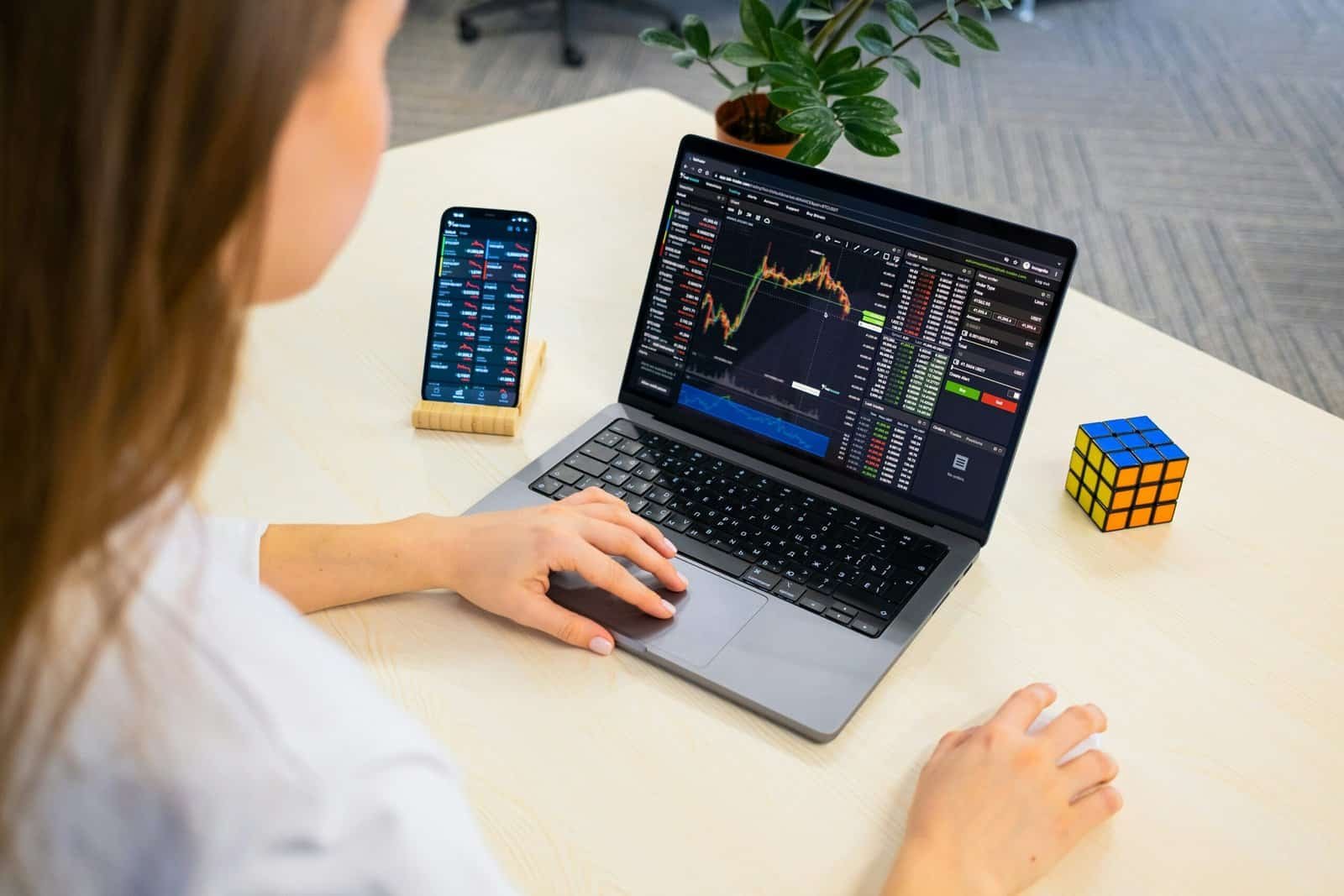Are you curious about how you can navigate the intriguing world of crypto derivatives? This guide is designed to help you understand and engage with this fast-paced and exciting aspect of cryptocurrency investing. As you journey into the realm of crypto derivatives, you’ll discover that there are many strategies and instruments you can use to enhance your trading skills and potentially maximize your profits.
What are Crypto Derivatives?
Before diving into how to trade crypto derivatives, it’s important to grasp what they actually are. Crypto derivatives are financial contracts that derive their value from an underlying cryptocurrency asset. These instruments allow you to speculate on the future price of cryptocurrencies without the need to own the actual coins.
Types of Crypto Derivatives
There are several types of crypto derivatives, and they each have unique characteristics. Here are the most common ones you might encounter:
Futures Contracts: Agreements to buy or sell a cryptocurrency asset at a predetermined price at a specified time in the future.
Options Contracts: Provide the right, but not the obligation, to buy (call) or sell (put) a cryptocurrency at a specified price before a particular date.
Perpetual Futures: Similar to futures contracts but with no expiry date, allowing traders to hold positions indefinitely.
Swaps: Contracts that allow trading the cash flows or values of the underlying cryptocurrency assets between parties.
Why Trade Crypto Derivatives?
You might wonder why one would choose to trade crypto derivatives instead of simply buying and holding cryptocurrencies. Here are several benefits:
Leverage: Many derivatives provide leverage, meaning you can control a large position with a relatively small investment. This amplifies potential gains but also increases risk.
Hedging: Derivatives can be used to hedge your positions in the spot market, protecting your portfolio from adverse price movements.
Speculation: Crypto derivatives enable you to speculate on price movements without having to own the physical asset. This can be particularly appealing in volatile markets.
Liquidity: These products often have high liquidity, making it easier to enter and exit trades.
Preparing to Trade Crypto Derivatives
Trading crypto derivatives requires preparation and an understanding of the markets. Here are steps to consider before starting your trading journey:
Education and Research
Before you start trading, it’s crucial to educate yourself about cryptocurrencies and the nature of derivative markets. Knowledge is your best tool against potential risks:
Cryptocurrency Basics: Understand blockchain technology and how different cryptocurrencies operate.
Market Analysis: Familiarize yourself with both fundamental and technical analysis to make informed decisions.
Derivatives: Learn how each derivative type operates and how they can be used effectively.
Financial Planning
Proper financial planning is essential to manage risks and set realistic expectations:
Risk Management: Determine how much capital you can afford to lose. Never invest money you cannot afford to lose in trading.
Leverage Use: Be cautious with leverage, as while it can amplify profits, it can also lead to significant losses.
Goal Setting: Set achievable goals—both for profit and learning—and understand that consistency is key to success in trading.
Choosing a Crypto Derivatives Exchange
Selecting the right exchange is crucial to your trading experience. Here are factors to consider when choosing a platform:
Security
Your chosen exchange should prioritize security. Look for features such as:
Two-Factor Authentication (2FA): Enhances account security by requiring a second form of identification.
Cold Storage: Most reputable exchanges keep a majority of funds offline to protect against hacks.
Regulatory Compliance: Ensure the exchange complies with legal requirements in your region.
Fees
Trading fees can affect your profit margins, so consider:
Trading Fees: Typically charged as a percentage of each trade; compare fees across platforms to find the best deal.
Withdrawal Fees: Charges for withdrawing your funds from the exchange; ensure they are reasonable.
Additional Costs: Be aware of any hidden fees that might apply to specific transactions.
User Experience
A user-friendly interface can vastly improve your trading experience:
Platform Usability: Look for a clean, intuitive interface that makes it easy to execute trades.
Mobile App Availability: If you intend to trade on-the-go, an effective mobile platform is essential.
Customer Support: Availability of comprehensive support options can be vital if you encounter issues.
Executing Trades in Crypto Derivatives
Now that you have a grasp of crypto derivatives and have chosen an exchange, let’s explore how you can execute trades effectively:
Placing Orders
Understanding how to place various types of orders is essential to trading:
Market Orders: Buy or sell immediately at the best available price.
Limit Orders: Specify the price at which you are willing to buy or sell, giving you more control over entry and exit points.
Leveraging
Derivatives trading often involves leverage. To use it wisely:
Margin Requirements: Understand the required margin for your open positions and the potential implications on your balance.
Leverage Ratio: Choose a suitable leverage that aligns with your risk tolerance and trading strategy.
Managing Risk
Risk management is key to sustainable trading:
Stop-Loss Orders: Set predetermined exit points to limit your losses.
Take-Profit Levels: Determine your target profit points to capitalize on favorable price movements.
Position Sizing: Keep your positions to a size that your capital can adequately support, preventing over-leveraging.
Developing a Trading Strategy
A solid strategy is your map to navigate the volatile waters of crypto trading. Here’s how to build and refine your approach:
Analyzing the Market
Market analysis helps inform your trades:
Technical Analysis (TA): Use charts and indicators to spot trends and potential price movements.
Fundamental Analysis (FA): Evaluate essentials such as project use cases, team background, and market demand for a holistic view.
Backtesting
Test your strategy against past market data to see how it performs before committing real capital:
Historical Data Analysis: Apply your strategy to historical price data to identify strengths and weaknesses.
Performance Metrics: Analyze statistics like win/loss ratio, average profit/loss, and maximum drawdown for insights.
Continuous Learning
Markets evolve, and so should your strategies:
Evaluate and Iterate: Regularly assess the effectiveness of your strategy and refine it based on what you learn.
Stay Informed: Keep up with market news and trends to adapt your strategies accordingly.

Common Mistakes in Crypto Derivatives Trading
Avoiding common pitfalls can save you from unnecessary losses and frustration. Here are some mistakes to watch out for:
Overleverage
While leverage can boost profits, misusing it often leads to significant losses:
- Understanding Leverage Risks: High leverage means high risk. Only use the necessary amount of leverage and avoid overextending positions.
Emotional Trading
Letting emotions drive your decisions can be costly:
- Avoiding Impulse Trades: Stick to your strategy and resist the urge to make decisions based on fear or greed.
Lack of Risk Management
Ignoring risk management can quickly deplete your trading capital:
- Implementing Safeguards: Use stop-loss orders and proper position sizing to protect your investments.
Trend Analysis in Crypto Derivatives
Understanding trends is crucial in crypto trading, as they guide your decision-making process. Let’s break it down:
Recognizing Trends
Identifying whether a market is in an uptrend, downtrend, or sideways trend is crucial:
Uptrend: Higher highs and higher lows indicate bullish momentum.
Downtrend: Lower highs and lower lows signify bearish momentum.
Sideways Trend: When the market consolidates, showing neither strong upward nor downward momentum.
Using Trend Indicators
Indicators can help you assess the current trend and its strength:
Moving Averages: Use simple or exponential moving averages to identify trend direction and potential reversal points.
Relative Strength Index (RSI): Helps determine if the market is overbought or oversold, indicating potential reversal levels.

Conclusion
Trading crypto derivatives is a rewarding venture, especially when armed with the right knowledge and tools. By carefully planning your approach, managing risks, and staying informed, you can navigate this challenging yet exciting aspect of the crypto market. Remember to start small, learn continually, and refine your strategy over time to maximize the chances of success. Happy trading!


